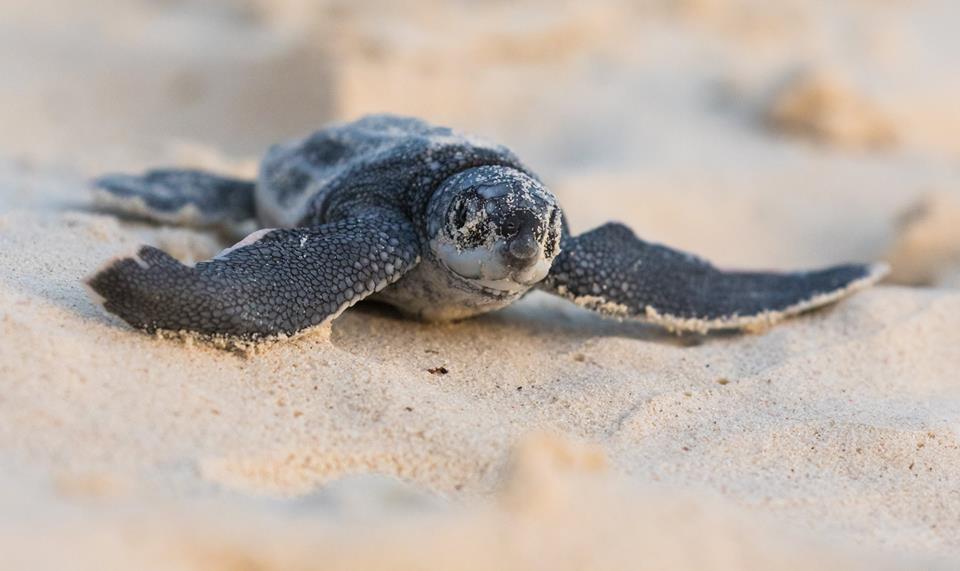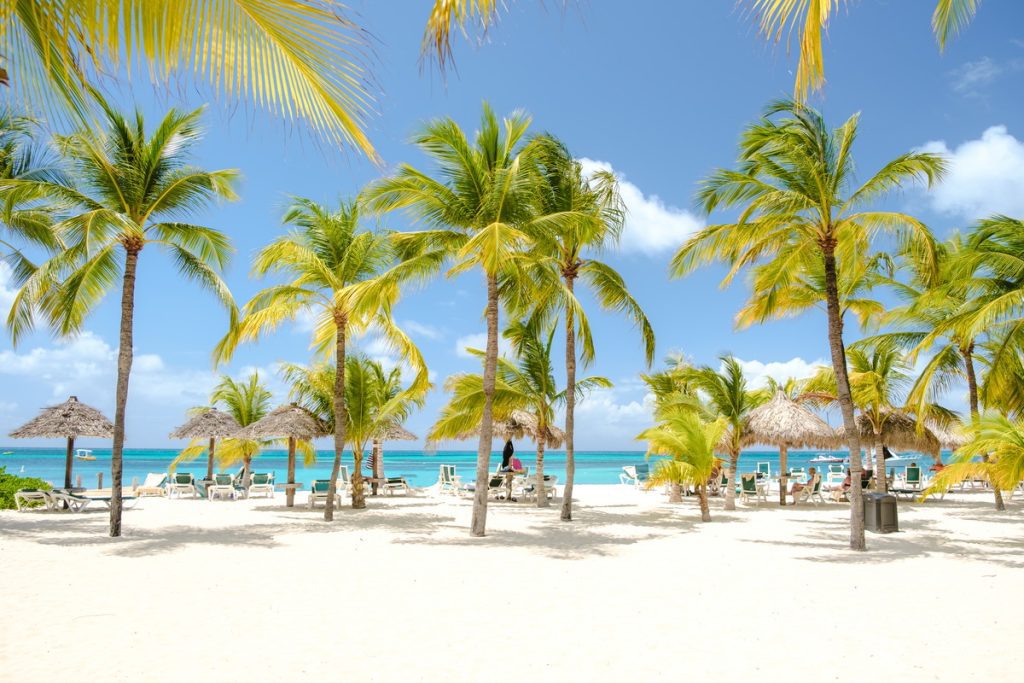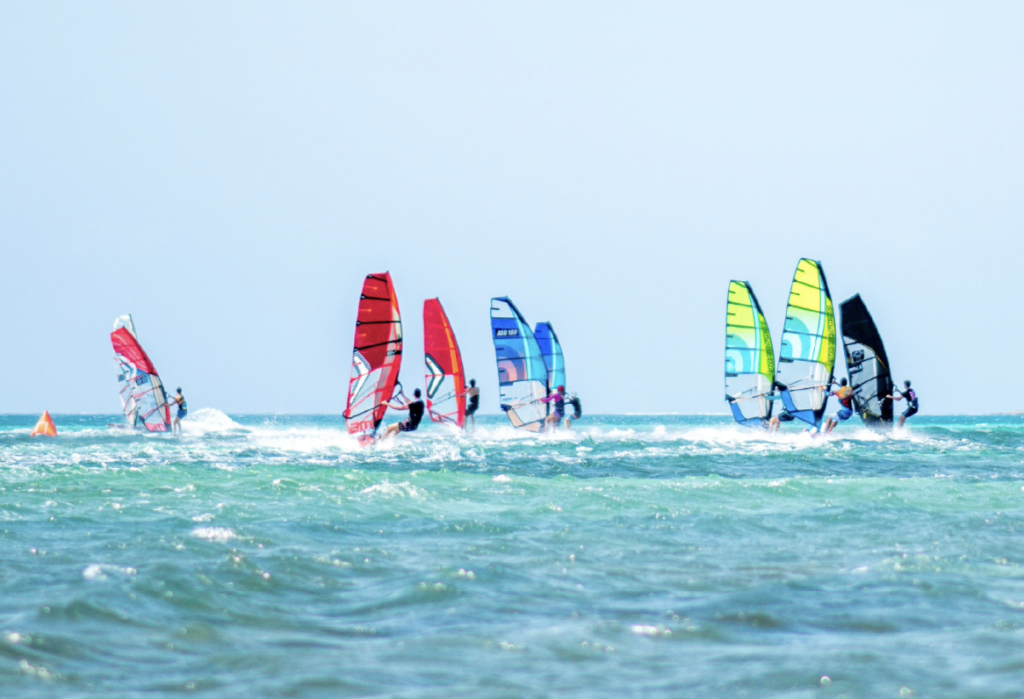Did you know that sea turtles can travel up to 13,000 miles?
Sea turtles are one of the oldest creatures on the planet. Unfortunately, sea turtles are now an endangered species. These beautiful animals come to Aruba every year to nest, followed by little hatchlings sprinting to the shoreline to begin their lifelong journey.
In this article we’ll go over everything about sea turtles in Aruba, where they live, how we can protect them and much more. Keep reading until the end for fun facts about sea turtles!
Types of sea turtles
First, let’s go over the different kinds of sea turtles you might encounter in Aruba. In total there are only seven different kinds of sea turtles. Four of them can be found in Aruba:
- Leatherback Sea Turtle
- Loggerhead Sea Turtle
- Hawksbill Sea Turtle
- Green Sea Turtle
Not all kinds of sea turtles are the same. For example, the Green Sea Turtle eats mostly plants and algae, hence their name. Hawksbill Sea Turtles are small to medium sized sea turtles and usually eat more different things than the Green Sea Turtle. Hawksbills eat algae, but also like sponges, sea cucumbers and crabs.
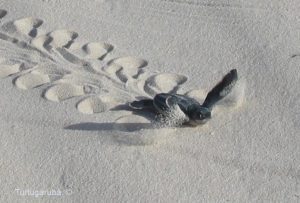
The Leatherback Sea Turtle is the largest kind of sea turtles. They can grow so big that they end up being over 6 ft (2m) long and nearly 2,000 pounds (900kg)! The Loggerhead Sea Turtle are named for their large heads and strong jaws, which allows them to eat things that are harder to chew. For example, they love big marine snails!
Where do they live?
Most sea turtles are found in warm waters all over the world and can travel extremely long distances. Sea turtles can easily travel over 1,000 miles away from the beaches where they hatched. The longest known distance a sea turtle has ever traveled is almost 13,000 miles, from Indonesia to the US.
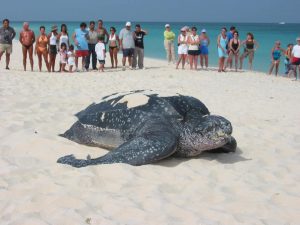
Nesting
Sea turtles spend most of their lives in the water. You can sometimes see sea turtles while snorkeling or diving, but it’s more likely to see them on the beach during nesting season. The nesting season runs from March through September. Hatching takes place from May to November. Incubation takes approximately 60 to 70 days.
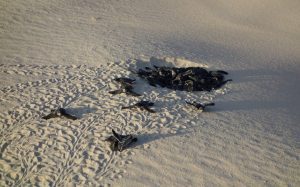
Female sea turtles come to the shore and get on the beach to dig out a nest to fit their eggs in. They dig holes with their back flippers, bury their eggs and return to the ocean. For the baby sea turtles, hatching can take up to seven days, since they have to dig themselves out of the nest.
The little hatchlings try to wiggle their way to the water and some of them might never even see land again. Female sea turtles only return to land to lay eggs. Male sea turtles sometimes never return and spend their whole lives in the ocean.
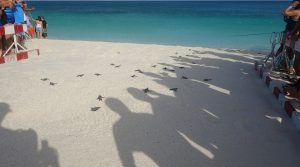
All sea turtles are endangered, which is why we should protect them where possible. When sea turtles come to Aruba to nest, it is important to keep a couple of things in mind.
Do not drive or litter on the beaches
When driving on the beaches, it the weight pushes the sand together which makes it hard for turtles to dig their nests. Also, leaving your non-degradable trash, such as plastic bags and straws, can kill sea turtles. They will mistake it for food.
No lights
Artificial lights (for example flashlights and photo or video cameras) at night can confuse female sea turtles and can make them return into the ocean without nesting. Also, it can disorient hatchlings, which can result in them wiggling into the wrong direction. This can dehydrate them or cause them to be run over by cars. From the beach hatchlings can only find the ocean because of the reflecting water.
Never disturb them
When you see a turtle nesting, please don’t disturb them. Sea turtles can be very shy and can leave their nest early. If you see a nesting turtle, please don’t come too close and call the 24 hour Turtle Hotline: +297 592-9393. This phone number belongs to Turtugaruba.
Turtugaruba
Turtugaruba is the local foundation that protects sea turtles in and around Aruba. There are several things that they do.
Education and public awareness
Turtugaruba makes sure news about sea turtles reaches the local press. They also keep park rangers, hotel personnel, dive operators and school up to date on information about sea turtles and their nesting behavior.
Fieldwork and protection
When the sea turtles start to nest on the beaches of Aruba, Turtugaruba makes sure to monitor all nesting beaches every day in the early morning. The area where most hotels are located is a popular spot for the Leatherback Sea Turtle to lay her eggs. Beaches like Eagle Beach are also patrolled at night.
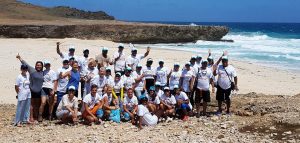
Data collection
While patrolling the beaches, Turtugaruba makes sure to register the data of the nests and turtles. Tissue samples (from dead hatchlings) are sent to laboratories for DNA analysis. Turtugaruba also started a research project on the incubation temperatures of the Leatherback Sea Turtle on the west coast of the Island.
Teamwork
Turtugaruba is a member of the AHATA Environmental Committee and works together with other nature organizations in Aruba, such as Aruba Marine Mammal Foundation and Fanapa. Every year, Turtugaruba’s volunteers participate in the Aruba Reef Care Project, as well as the Garnier Beach Cleanup. Besides daily cleaning during patrolling, both projects are focusing on cleaning up all the beaches in Aruba.
What can you do to help the sea turtles?
It’s really easy to contribute to a safe environment for sea turtles in Aruba. Of course, always clean up after yourself when you’re at the beach to prevent sea turtles from eating your plastic trash. Also, when you spot sea turtles nesting, call Turtugaruba’s 24 hour Turtle Hotline: +297 592-9393.
If you want to help out Turtugaruba, you can sign up to become a volunteer. You can always contact them via the Turtugaruba website.
Turtugaruba’s volunteers pay for their own gasoline, office supplies and field materials. All the time and energy they put in is out of love for the sea turtles. They greatly appreciate it when people help them out financially. Donations are very welcome and will be used for the protection and conversation of the sea turtles visiting Aruba.
Fun facts about sea turtles
Fun fact 1: Unlike other kinds of land turtles, sea turtles can’t crawl back into their shell.
Fun fact 2: The estimated lifespan of sea turtles is about 70 to 80 years.
Fun fact 3: Female sea turtles return to the beach they were born to nest. The Leatherback Sea Turtles come back up to 8 times every nesting season.
Fun fact 4: Green Sea Turtles can hold their breath for up to 5 hours. Looking for food only takes them 5 minutes, but they can stay underwater much longer. Their heart rate slows down to one beat every 9 minutes to conserve oxygen.
Fun fact 5: Don’t worry when you see a sea turtle crying. In fact, they’re just cleaning! By crying they can get rid of excess salt from their eyes.
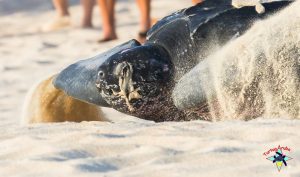
Fun fact 6: Sea turtles use the earth’s magnetic field as a ‘GPS’ on long journeys.
Fun fact 7: Sea turtles nest every 2 to 5 years.
Fun fact 8: The Leatherback Sea Turtles in Aruba can lay more than 115 eggs!
(Not so fun) fact 9: Approximately 1 in 1000 hatchlings survives and matures.
(Not so fun) fact 10: All species of sea turtles are endangered and need our protection.
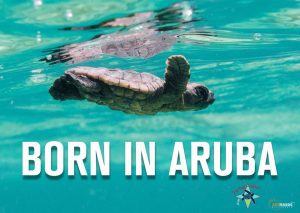
Help the turtles!
Remember: When you see a nesting turtle, call the Turtle Hotline: +297 592-9393. For more information about sea turtles and the Turtugaruba foundation, visit their website here.


